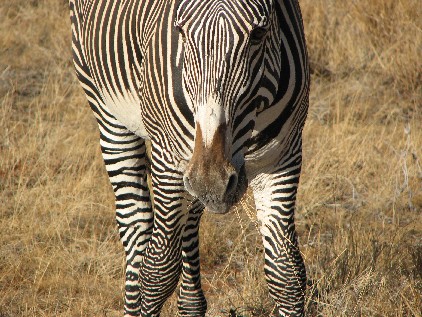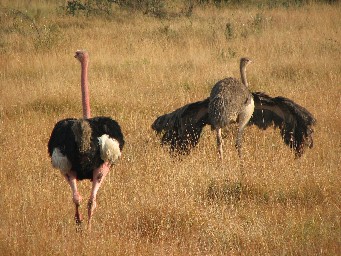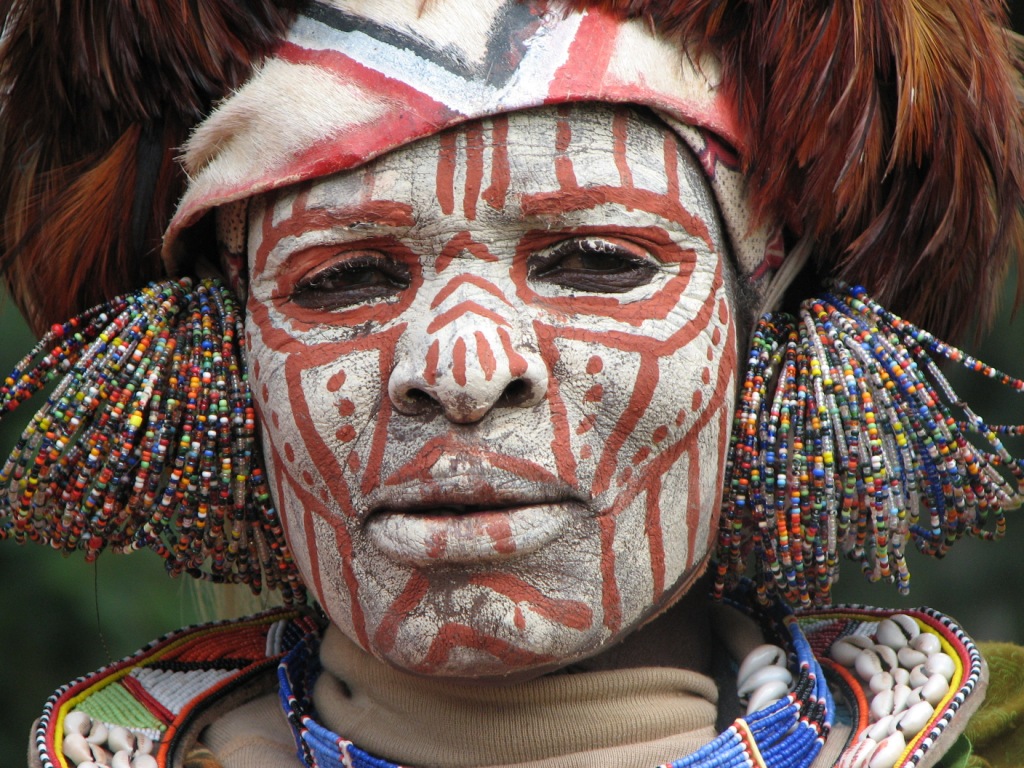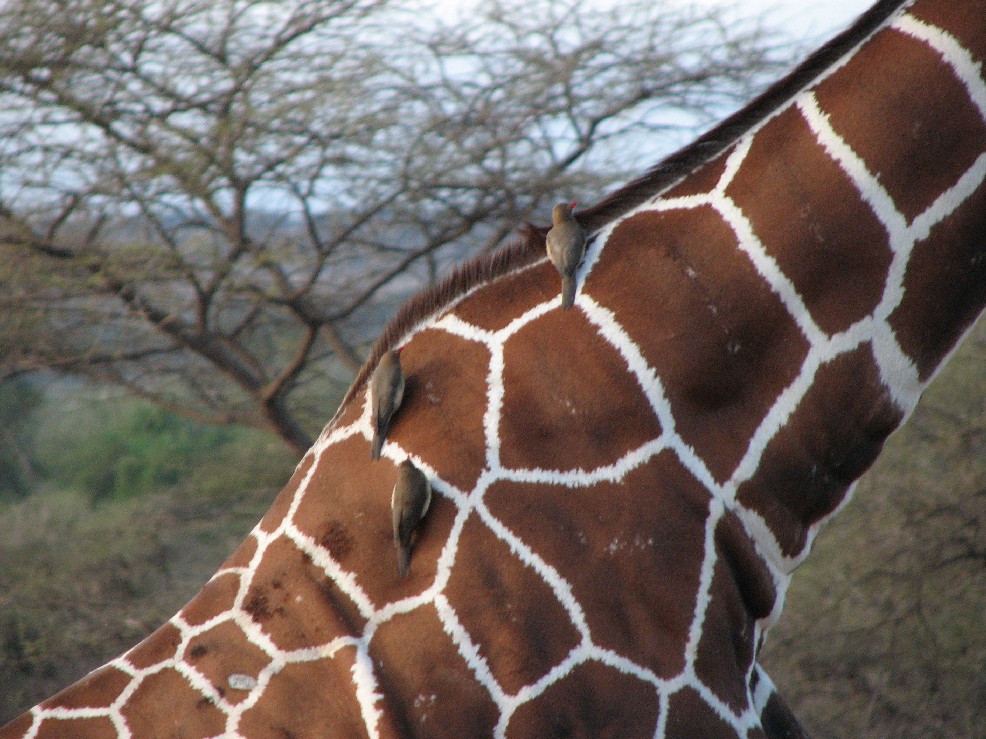
Throughout Vanuatu the terrestrial and marine resources are managed through a Customary Tenure system. This has wide ranging implications when working in resource management and conservation for both the Ni-Vanuatu involved and the biodiversity here in Vanuatu. Throughout my service here, as a Peace Corps volunteer serving as a “Coastal Resources Management Advisor,” first in a rural village of Malekula and now as the National Coordinator for Reef Check Vanuatu, I have had to work within and have an understanding of this management system. So I guess this blog is meant to give a brief explanation of the Customary Marine Tenure system here in Vanuatu. So what is Customary Marine Tenure (CMT) anyway?
In Vanuatu, through customary chiefs, families or tribes (nasaras), Ni-Vanuatu retain exclusive rights to harvest marine resources in near shore waters.
The constitution of Vanuatu upholds these rights in Chapter 12 Article 73 which states: “All land in the Republic belongs to the indigenous custom owners and their descendants.” “Land” in Vanuatu is defined under the Land Reform Act as including “land extending to the seaside of any offshore reef” and CMT is a system where the management of the near shore reefs is the responsibility of the customary reef owners. This system varies greatly from the management system in the United States at which anything from the high tide mark is under the management of the government and harvesting, activities and regulations are products of statutory law. In Vanuatu, “customary” tenure refers to the present practices of management which are rooted in custom or historical practices but not necessarily identical to past practices... Think flexibility. This means that some of the practices are historically rooted, such as the placing of a “taboo leaf,” although the motivation and restrictions can change according to contemporary needs and knowledge. So the placement of a “taboo” on a reef area (traditional practice) could now restrict only the use of a modern technology, such as gill nets (which are not customarily used) and this is still considered “customary marine tenure.”
CMT varies from village to village within an island and between islands and has strong ties to different language groups, customs, rules and norms and different land tenure systems.
There is a great deal of renewed interest in CMT in Vanuatu today in many areas. I say renewed because many of the customary practices have not been exercised in many years due to the overall degrading of customary ceremonies, rights and rituals in Vanuatu. Contemporarily Ni-Vanuatu are interested in exercising their rights to manage their dwindling resources and this is largely due to marine resources in Vanuatu facing increased fishing and harvesting pressure due to:
* Increased population (and ecological footprint per capita)
*Introduction of more “efficient” fishing technology
*Dependence on cash economy and 
In addition to human impacts on near shore marine areas Vanuatu is also very susceptible to natural disturbances such as earthquakes and cyclones, which can have a great impact on coral reefs and availability of resources in Vanuatu.
There are many different kinds of CMT techniques being practices. SOME are for conservation reasons and others are not. The most commonly used technique is the traditional marine taboo. Customarily the taboo was used for wide ranging purposes.
* Areas in which marine resources are heavily depended on for subsistence and contemporarily, for economic purposes conservation taboos may be used.
*Contemporary surge in this type of taboo today in Vanuatu.
Death Taboos:
* Some areas would have used taboos in the event of the death of a chief or any family member’s death.
* Time periods and extent would vary by area and culture
Circumcision taboos:
* A taboo may be put in place when an age-class of males goes through circumcisions ceremonies.
Taboos related to Yam Seasons
*Taboos may be imposed at the planting of, harvesting of or growing duration of yams.
* Also may be behavioral taboos or consumption taboos related to yams and marine resources (For example in Unua, Malekula if you consumed turtle you can’t eat, plant or touch a yam for five days because if you do your yams will grow like the flipper of the turtle)
Taboos related to Feasts or Festivals
* Customary taboos were often used to enhance the size and amount of fishing stocks in preparation for a large feast, marriage or festival.
*Most “conservation taboos” are related to the idea of increasing stocks for consumption
Initiating taboos generally are locally and culturally determined and may be either formally announced without any formality or proclaimed with a special, site specific, ceremony which usually will involve the killing of pig or large feast and placing of the “namele” or locally relevant taboo leaves. Taboos that incorporate customary practices are generally viewed as more powerful and respected by community members. Contemporarily many traditional ceremonies have now incorporated written agreements and management plans which is testament to the flexibility of the CMT system. The taboo is a flexible management tool that is the embodiment of the customary tenure system giving a chief or landowners the right to restrict harvest and activities in a reef or near shore area. Taboos may vary in several ways:
* Taboos may be seasonal or annual for species specific breeding needs.
* Taboos may be “full closure,” multi-species or species specific
* Taboos may vary in temporal length.
* Taboos may restrict certain fishing technologies.
In Vanuatu within the CMT system gender is an important component with men, women, boy s and girls each having a role to play in CMT and their activities, targeted species and harvest techniques will vary from island to island and village to village. In general men often participate in off-shore fishing, deep sea fishing and diving for invertebrates. Boys often fish, dive within deeper reef areas, go spear fishing, and night diving with underwater spear guns. While women, girls and small children often fish in near shore areas, participate in reef gleaning, dig for bivalves and collect invertebrates such as octopus at low tide.
s and girls each having a role to play in CMT and their activities, targeted species and harvest techniques will vary from island to island and village to village. In general men often participate in off-shore fishing, deep sea fishing and diving for invertebrates. Boys often fish, dive within deeper reef areas, go spear fishing, and night diving with underwater spear guns. While women, girls and small children often fish in near shore areas, participate in reef gleaning, dig for bivalves and collect invertebrates such as octopus at low tide.
Because much of Vanuatu is involved within a subsistence economy, reef closures are significant short term sacrifices that strive to fill a long-term subsistence need in the village. During reef closures villages may need to mitigate the loss of marine protein by:
*Increasing dependence and utilization of land animals for protein
*Fish outside the taboo area (deep water fishing)
*Cut back on consumption
* Purchase canned meat or fish
* Buy fresh fish from nearby markets
* Negotiate for the rights to fish in neighboring fishing grounds.

There are many issues in the contemporary marine tenure system in Vanuatu that may affect the effectiveness and ability to exercise CMT. After the return of land in the 1980’s many coastal areas, especially in urban areas, fell under dispute and remain untenured. In addition the increased economic valuable of marine resources, disagreements about customary boundaries, population pressure and loss of respect for CMT have resulted in disputes over tenure and management in some areas. Vanuatu’s growing dependency on a cash economy also affects the tenure system and increases the likelihood of unsustainable marine harvesting. Much of the export economy related to marine resources and the tourist industry puts additional strain on near shore areas through curio-sales and infrastructure developments. And although legally the Land Lease Act stipulates that customary owners cannot lease their reef areas, access and tenure can only be done through a contract between the lessee and leaser. It is not uncommon that a Ni-Vanuatu finds himself frustrated because he failed to dictate the right to pass over leased ground to reach the reef area.
The flexibility of the CMT system is a strength allowing the adaptation of new management techniques to match the changing economical and ecological situation. In many aspects this is where I and other environmental extentionist have entered the mix here in Vanuatu. Ni-Vanuatu villagers are very hungry for advice when it comes to their coastal resources. However, villages do not want to be told how to manage their reefs or fisheries and it is their customary and legal right not to be micro-managed by outsiders. In order to work within the CMT system here in Vanuatu, you must respect it and value it within your project. Ni-Vanuatu customary managers do want to receive education relating to contemporary practices, technologies and management techniques... They want to know what management techniques are available, where, when and how long to apply these techniques. In the end, it is completely up to them to take control of their resources and most managers are seeking out information and new techniques to make well informed decisions. Many times this may involve looking back to past practices and knowledge and giving equal value and respect to those techniques as well as newer “scientific” explanations. I guess that is the extent of my spill on customary marine tenure and I would be confident in saying that during my service here in Vanuatu the local people taught me more about management and the need for conservation of both biological and cultural resources than I was able to teach them.
-Jessica













No comments:
Post a Comment